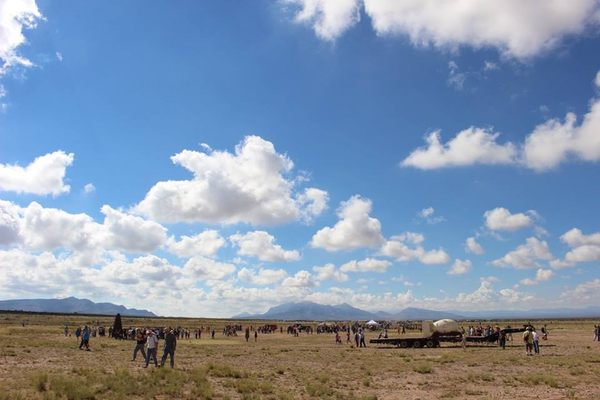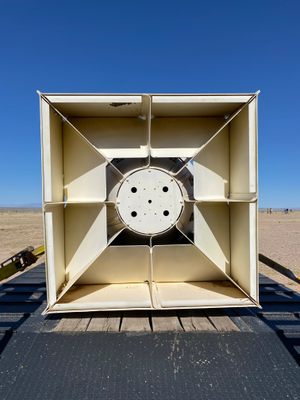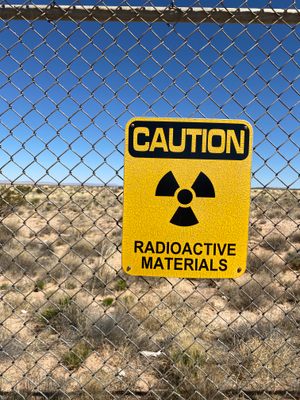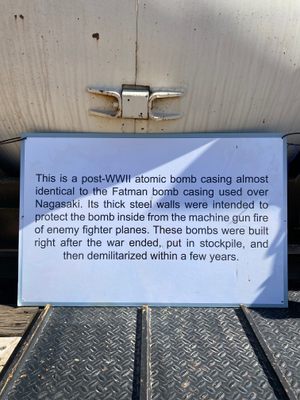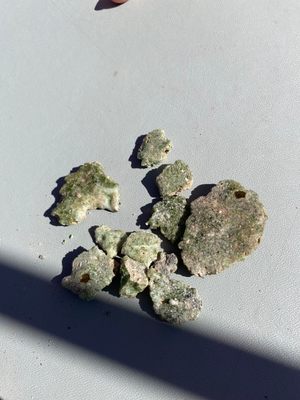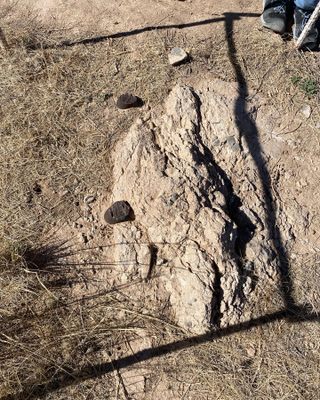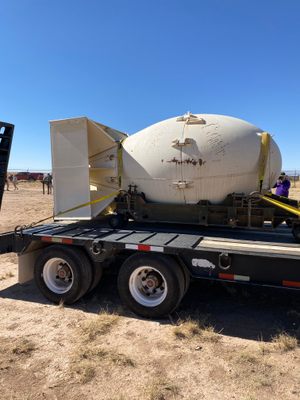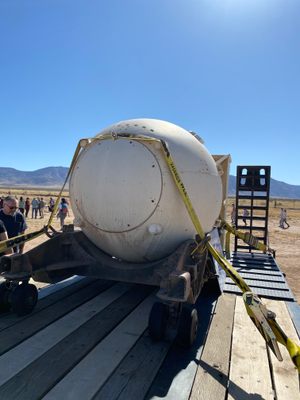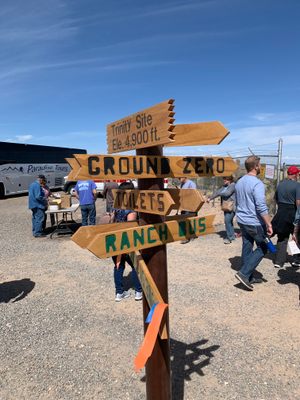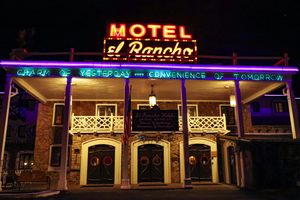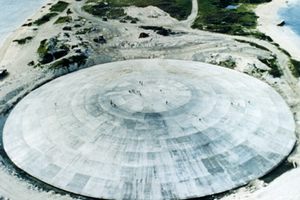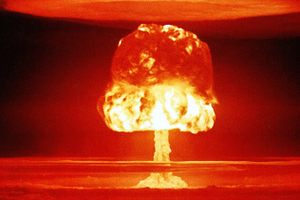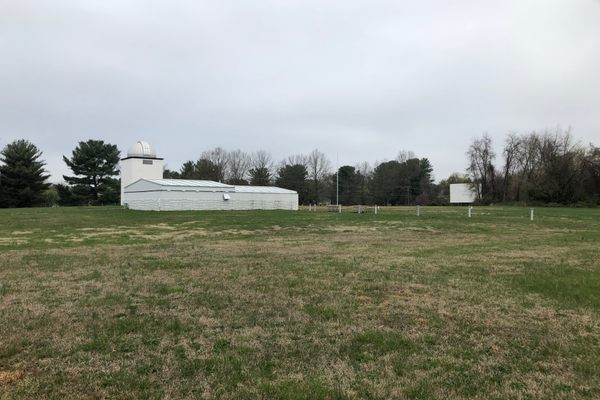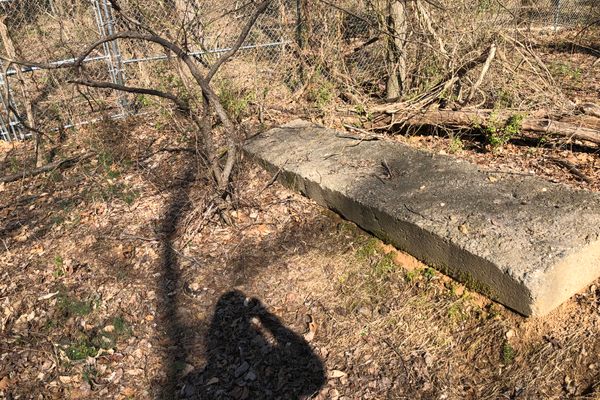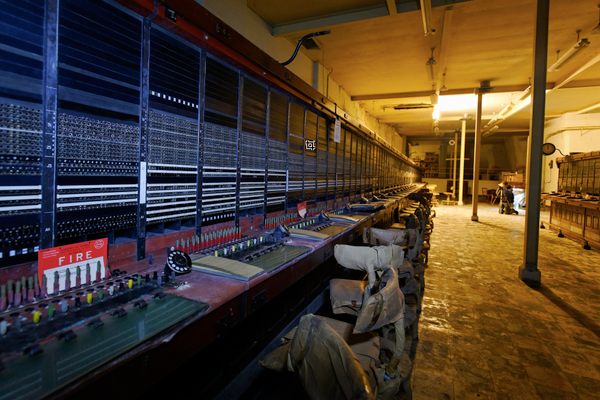About
On July 16, 1945, deep in the deserts of New Mexico, Pandora's Box was opened, and the Atomic Age was born.
Trinity was code for the first detonation of "The Gadget", a nuclear device, conceptually similar to its devastating cousin, "Fat Man." Fat Man was infamously detonated over Nagasaki three weeks later, killing between 40,000 to 75,000 people in the immediate blast. Coupled with the earlier bombing of the city of Hiroshima, the world watched in unfolding horror as the fallout continued to take lives by way of radiation poisoning and cancer for decades. The attacks by the U.S on Japan during WWII were the first and last time that the catastrophic weapons were employed during a war.
While the U.S. military may not have had the foresight to grasp the awesome destruction that a 13-pound plutonium device could have on a population long term, they knew what it could do on initial contact, because Trinity gave them a good show. The 600 ft. wide fireball obliterated trees, turned sand into glass, and blew out windows 120 miles away.
Normally off-limits to civilians, the desolate scene of Trinity's detonation is open to the public the first Saturday of April and/or October each year. At ground zero you can see green trinitite created by the bomb blast. Larger samples will be on display with a guide available to answer questions. Native trinitite can still be seen on the ground near the fenced borders.
A shuttle bus is also available to take you two miles to the McDonald Ranch House where the bomb was assembled. Outside ground zero is "Jumbo," the steel canister made for containing Trinity's plutonium if the test had been a dud. Thankfully, someone thought better of using it as it would have rained molten radioactive steel down on the viewers of the successful test. Also, there is a mobile souvenir booth offering decent t-shirts, hats, and challenge coins.
The US Parks department is also present to provide Parks Passport Stamps and reading material about the Manhattan project. On the perimeter fences are pictures and information about Trinity. At the exact center of the area stands a black lava rock obelisk. Close by you can see what remains of one leg of the obliterated tower that The Gadget was detonated on. A plaque on the obelisk reads simply: "Trinity Site Where The World's First Nuclear Device Was Exploded On July 16, 1945."
Related Tags
Know Before You Go
White Sands Missile Range is a military base, and has increased their already stringent ID requirements, so be sure to check the website to find current information, and bring a second form of ID if you're in doubt (your passport is usually the best choice). Follow instructions referring to authorized and unauthorized areas of the site. While only open to "atomic tourists" certain days out of the year, there is a historic marker on US 380, located near the Stallion Gate turnoff. The five-mile drive to the gate is still scenic, and you can see observatories up on the hills as you approach the gate. Since it's a military base, the whole area is a no drone zone.
To visit the Trinity Site on days when it is open to the public: From Socorro, head south on I-25 to US Rte. 380. Take US 380 east for 12 miles to the turnoff for the Stallion Gate. The gate is 5 miles from the highway, and you'll pass through a checkpoint here. The Trinity Site is 17 miles further—just follow the car in front of you (all other routes will be blocked and likely guarded by the military). The road is paved the entire way, and there's a very large parking area just outside the Trinity Site (pay close attention to where you parked—it's easy to get lost here). COME EARLY. Even better, be in line by 6:30 or 7 a.m. for when the gates open at 8 a.m. The site is also dog- friendly as long as your dog is well-behaved and on leash. Dogs are not allowed on the shuttle to the McDonald House, though.
From Alamogordo, the military will escort a caravan of civilian vehicles through a gate on the southeastern side of the missile range and to the Trinity Site. Exact details for the caravan are posted on the website, but it usually departs Alamogordo before 8 AM, and leaves the Trinity site to return to Alamogordo after 2 PM. However, civilian vehicles that are not in the caravan are not permitted to enter or exit using that route, so if you miss the departure, or wish to leave the Trinity Site before or after the caravan does, you must use the Stallion Gate which is a 110-mile drive from Alamogordo.
It is forbidden to remove any of the trinitite from the premises.
Community Contributors
Published
October 23, 2011
Sources
- http://takemytrip.com/06newmex/06_15a.htm
- http://en.wikipedia.org/wiki/Trinity_(nuclear_test)
- http://www.vivanewmexico.com/nm/sw.trinity.html
- https://www.google.com/maps/place/Trinity+Site/@33.6716789,-106.5007562,13.25z/data=!4m12!1m6!3m5!1s0x86e07140695360ad:0x7a8e17bda9aa3eda!2sWhite+Sands+Space+Harbor!8m2!3d32.9451933!4d-106.4188957!3m4!1s0x871ff438236092fb:0x1ae8f5bfe12a526d!8m2!3d33.6773542!4d-106.4753723
